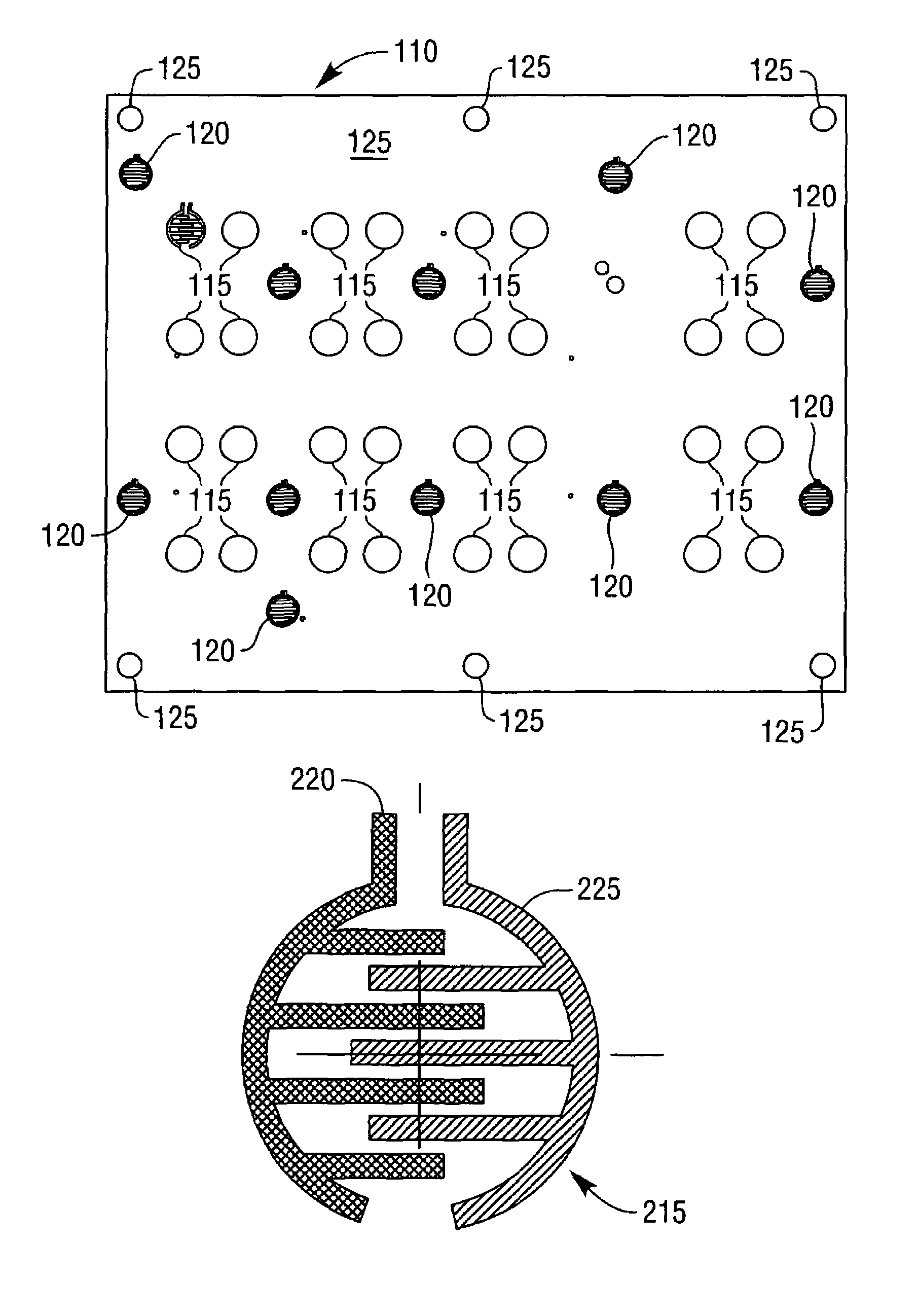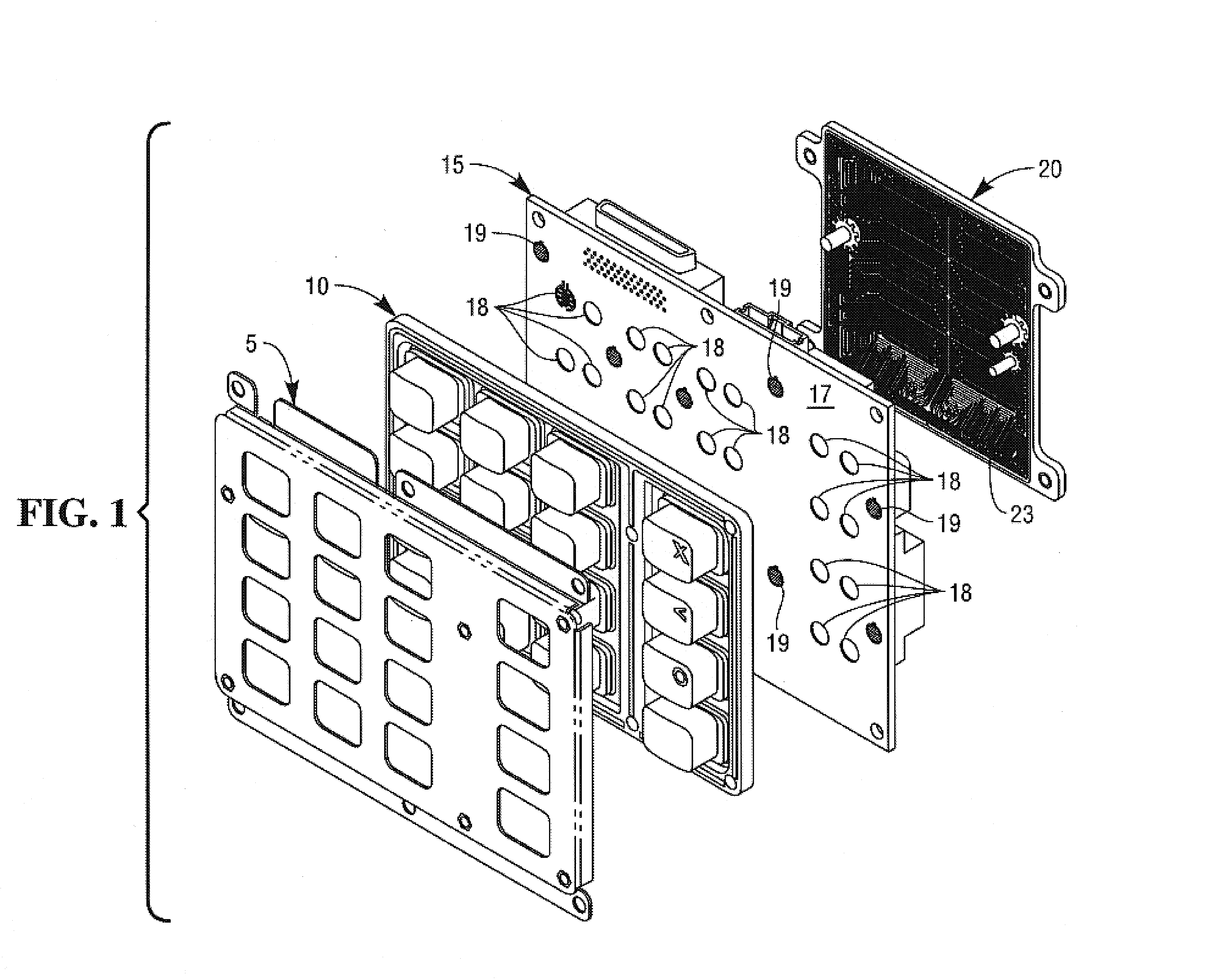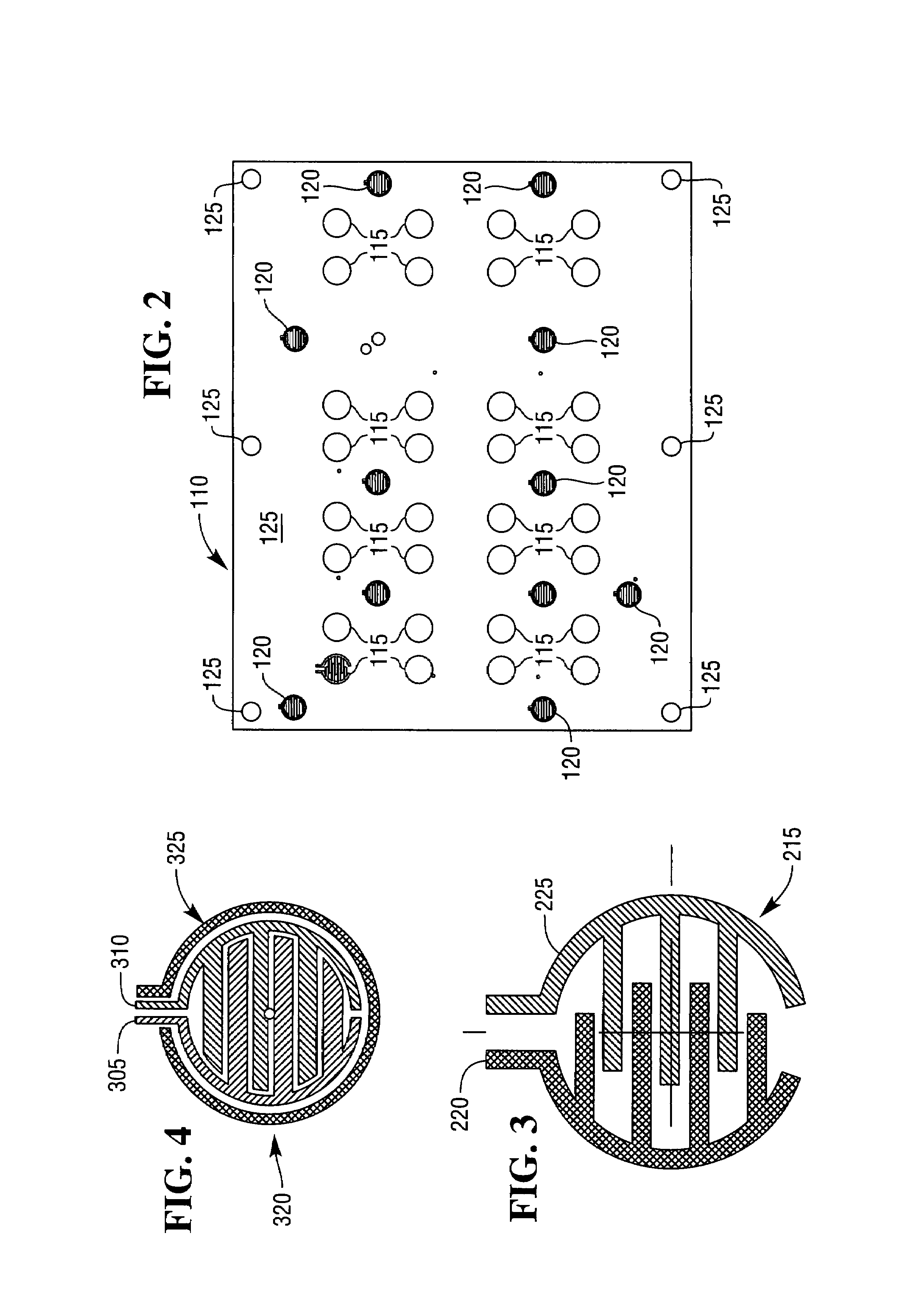Secured pin entry device
- Summary
- Abstract
- Description
- Claims
- Application Information
AI Technical Summary
Benefits of technology
Problems solved by technology
Method used
Image
Examples
Embodiment Construction
[0024]The invention is a Secure PIN Encrypting Device (SPED) used to generate an encrypted PIN (Personal Identification Number) for use over an ATM network. FIG. 1 shows the basic overall construction of the SPED and the different basic components. The SPED consists of a front keypad frame 5 that that secures a keypad 10 made of rubber or other suitable soft, waterproof, flexible material with sixteen keycaps 11. The keypad frame 5 and keypad 10 attach to the front of a printed circuit board (PCB) 15.
[0025]The PCB 15 is made from hard plastic and supports a number of electrical components. The front side of the PCB 17 includes contacts 18 registering keypad 10 depressions. The front side of the PCB 17 also includes tamper detection contacts 19 designed to detect efforts to remove the keypad cover 5 and the keypad 10. The back side of the PCB 17 includes the mounted electrical components such as connectors, a battery, and a speaker. The components also include the SPED security circu...
PUM
 Login to View More
Login to View More Abstract
Description
Claims
Application Information
 Login to View More
Login to View More - R&D
- Intellectual Property
- Life Sciences
- Materials
- Tech Scout
- Unparalleled Data Quality
- Higher Quality Content
- 60% Fewer Hallucinations
Browse by: Latest US Patents, China's latest patents, Technical Efficacy Thesaurus, Application Domain, Technology Topic, Popular Technical Reports.
© 2025 PatSnap. All rights reserved.Legal|Privacy policy|Modern Slavery Act Transparency Statement|Sitemap|About US| Contact US: help@patsnap.com



